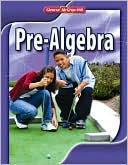
To describe: The characteristics, that a square share with a rectangle and with a rhombus.
Answer to Problem 29HP
Square shares following characteristics with rectangle and rhombus:
- Similarity of square with rectangle: (i) Both are parallelograms.
- Similarity of square with rhombus: (i) Both are parallelograms.
(ii) Each angle of both is 90 degree.
(iii) Diagonals of both are equal and bisect each other.
(iv) Diagonals of both bisect the opposite angles.
(v) Opposite sides are always equal in both.
(ii) All four sides of both are equal to each other.
(iii) Diagonals of both are equal and bisect each other.
(iv) Diagonals of both bisect the opposite angles.
(v) Opposite sides are always equal in both.
(vi) Diagonals bisect each other at 90 degree.
Explanation of Solution
Given information: A square, a rhombus and a rectangle.
Concept used: Square, rhombus and rectangles all three are parallelograms. In square all sides are equal and each angle is of 90 degree and its diagonals are equal, bisecting each other. In rectangle, only opposite sides are equal and each angle is also of 90 degree and its diagonals also bisect each other and are equal. In rhombus, all sides are equal but no angle is of 90 degree and also diagonals are not equal, even bisecting each other always.
Conclusion: Based on above concept, the similarity between square and rectangle and square and rhombus can easily be characterized as shown in “answer” section.
Chapter 11 Solutions
Pre-Algebra, Student Edition
Additional Math Textbook Solutions
A Problem Solving Approach To Mathematics For Elementary School Teachers (13th Edition)
Elementary Statistics
Elementary Statistics: Picturing the World (7th Edition)
Basic Business Statistics, Student Value Edition
College Algebra with Modeling & Visualization (5th Edition)
A First Course in Probability (10th Edition)
- Safari File Edit View History Bookmarks Window Help Ο Ω OV O mA 0 mW ర Fri Apr 4 1 222 tv A F9 F10 DII 4 F6 F7 F8 7 29 8 00 W E R T Y U S D பட 9 O G H J K E F11 + 11 F12 O P } [arrow_forwardSo confused. Step by step instructions pleasearrow_forwardIn simplest terms, Sketch the graph of the parabola. Then, determine its equation. opens downward, vertex is (- 4, 7), passes through point (0, - 39)arrow_forward
- In simplest way, For each quadratic relation, find the zeros and the maximum or minimum. a) y = x 2 + 16 x + 39 b) y = 5 x2 - 50 x - 120arrow_forwardIn simplest terms and step by step Write each quadratic relation in standard form, then fi nd the zeros. y = - 4( x + 6)2 + 36arrow_forwardIn simplest terms and step by step For each quadratic relation, find the zeros and the maximum or minimum. 1) y = - 2 x2 - 28 x + 64 2) y = 6 x2 + 36 x - 42arrow_forward
- Write each relation in standard form a)y = 5(x + 10)2 + 7 b)y = 9(x - 8)2 - 4arrow_forwardIn simplest form and step by step Write the quadratic relation in standard form, then fi nd the zeros. y = 3(x - 1)2 - 147arrow_forwardStep by step instructions The path of a soccer ball can be modelled by the relation h = - 0.1 d 2 + 0.5 d + 0.6, where h is the ball’s height and d is the horizontal distance from the kicker. a) Find the zeros of the relation.arrow_forward
 Algebra and Trigonometry (6th Edition)AlgebraISBN:9780134463216Author:Robert F. BlitzerPublisher:PEARSON
Algebra and Trigonometry (6th Edition)AlgebraISBN:9780134463216Author:Robert F. BlitzerPublisher:PEARSON Contemporary Abstract AlgebraAlgebraISBN:9781305657960Author:Joseph GallianPublisher:Cengage Learning
Contemporary Abstract AlgebraAlgebraISBN:9781305657960Author:Joseph GallianPublisher:Cengage Learning Linear Algebra: A Modern IntroductionAlgebraISBN:9781285463247Author:David PoolePublisher:Cengage Learning
Linear Algebra: A Modern IntroductionAlgebraISBN:9781285463247Author:David PoolePublisher:Cengage Learning Algebra And Trigonometry (11th Edition)AlgebraISBN:9780135163078Author:Michael SullivanPublisher:PEARSON
Algebra And Trigonometry (11th Edition)AlgebraISBN:9780135163078Author:Michael SullivanPublisher:PEARSON Introduction to Linear Algebra, Fifth EditionAlgebraISBN:9780980232776Author:Gilbert StrangPublisher:Wellesley-Cambridge Press
Introduction to Linear Algebra, Fifth EditionAlgebraISBN:9780980232776Author:Gilbert StrangPublisher:Wellesley-Cambridge Press College Algebra (Collegiate Math)AlgebraISBN:9780077836344Author:Julie Miller, Donna GerkenPublisher:McGraw-Hill Education
College Algebra (Collegiate Math)AlgebraISBN:9780077836344Author:Julie Miller, Donna GerkenPublisher:McGraw-Hill Education





